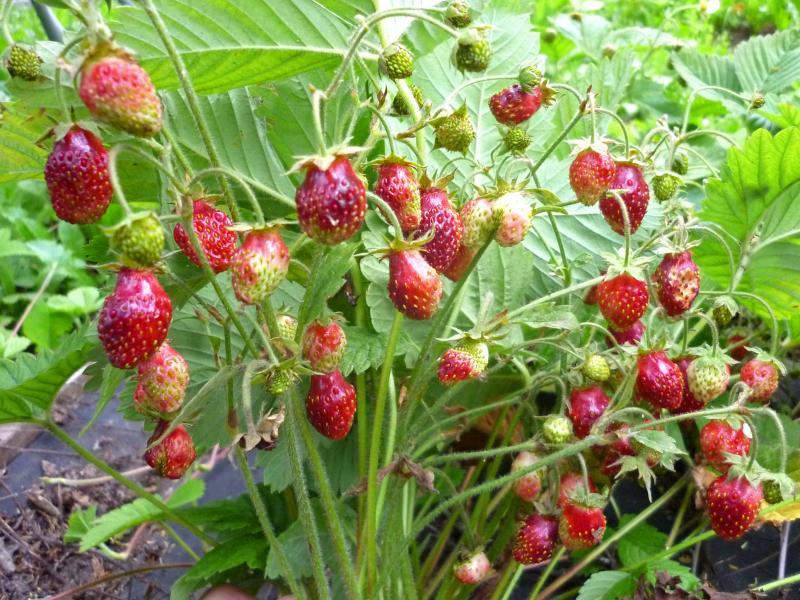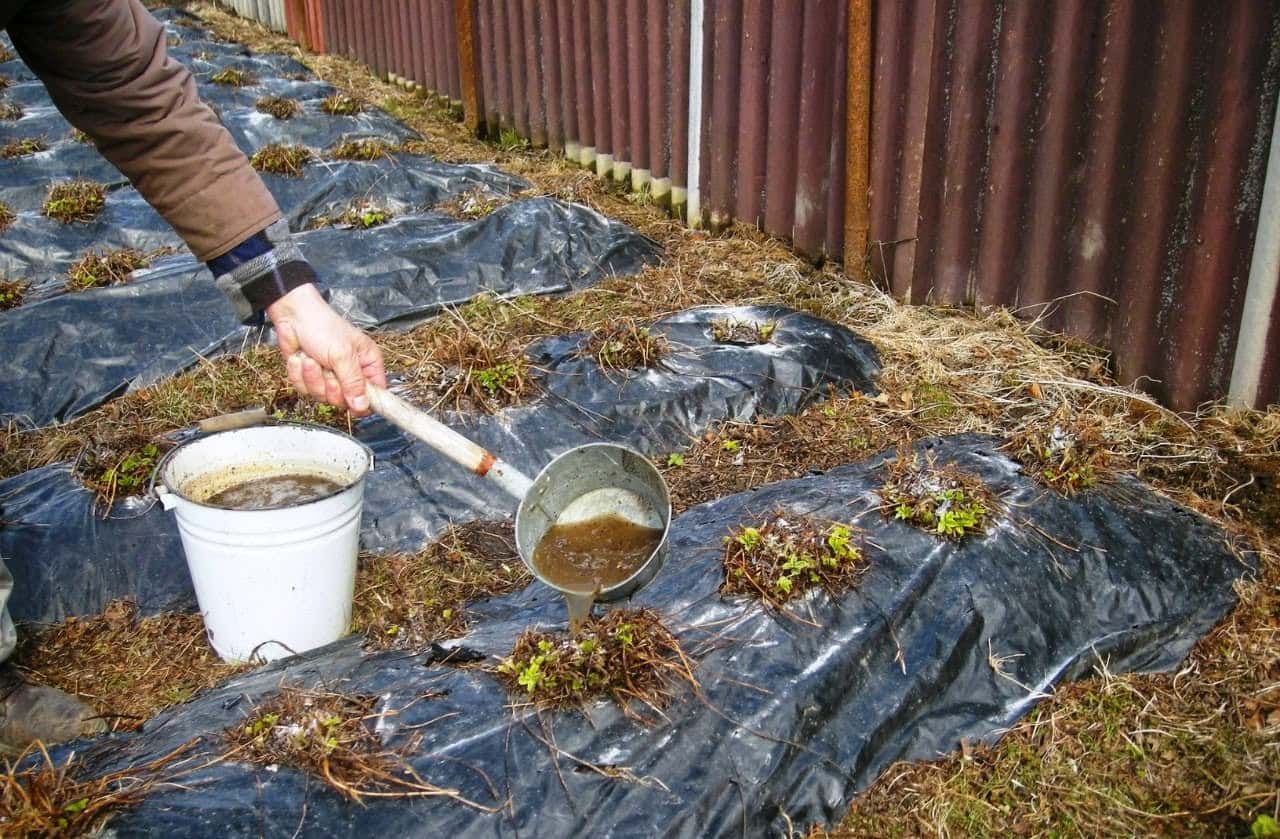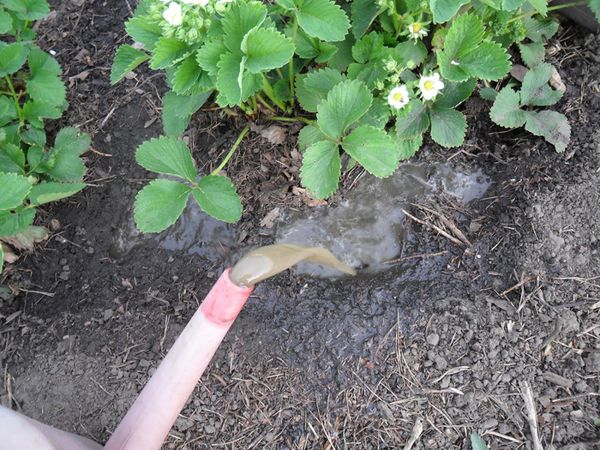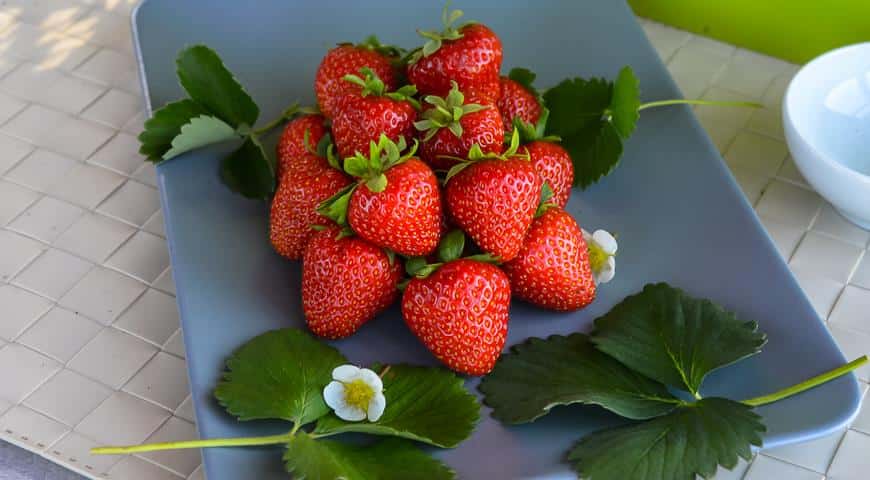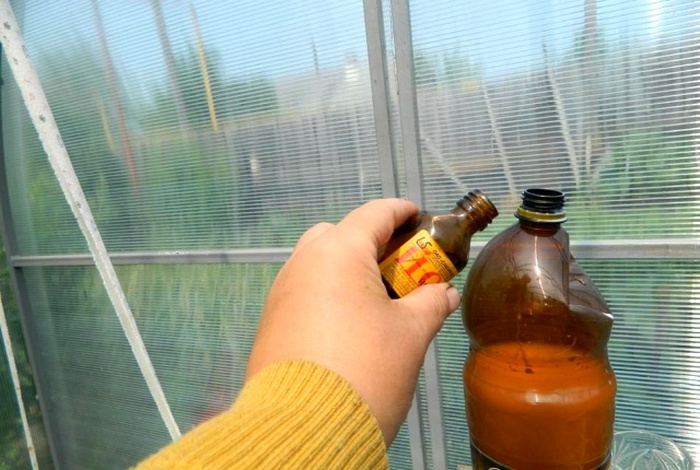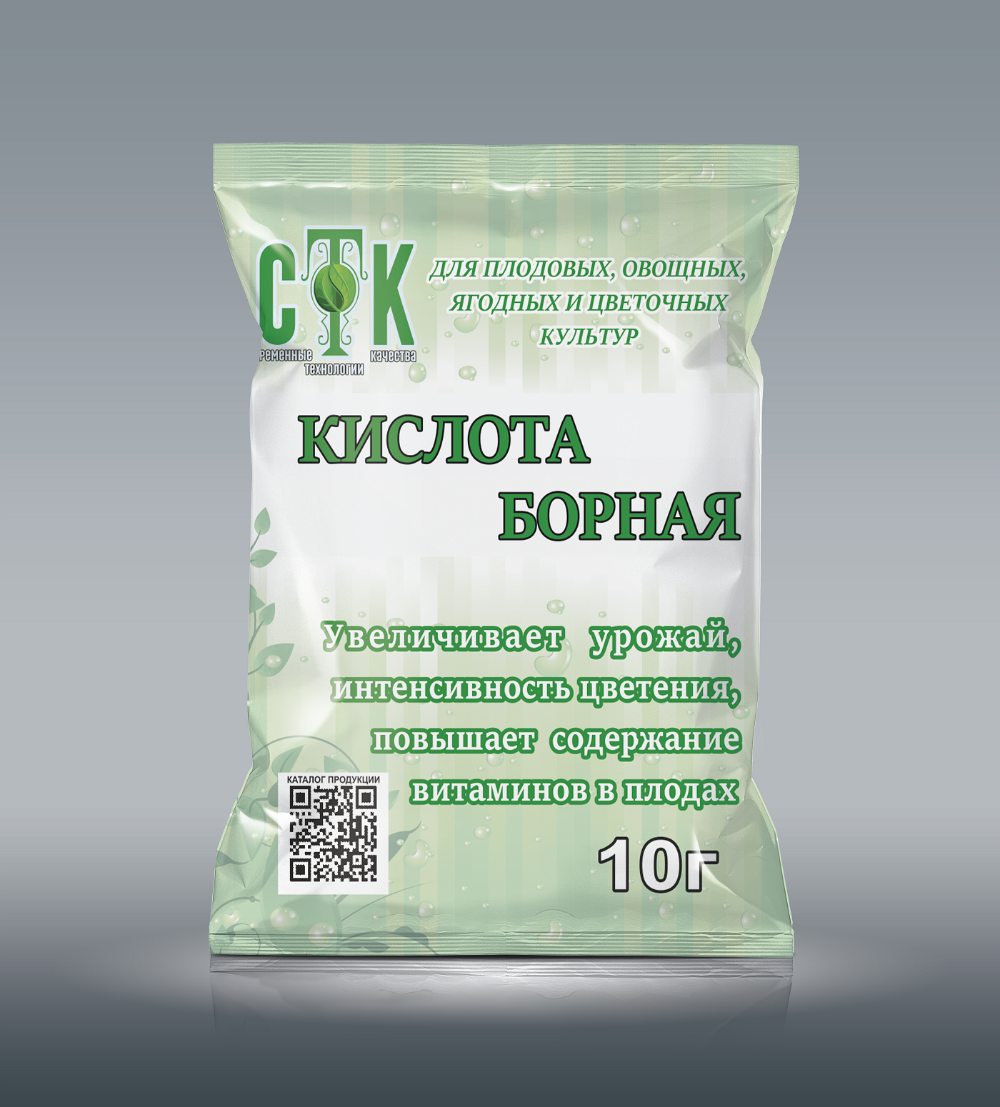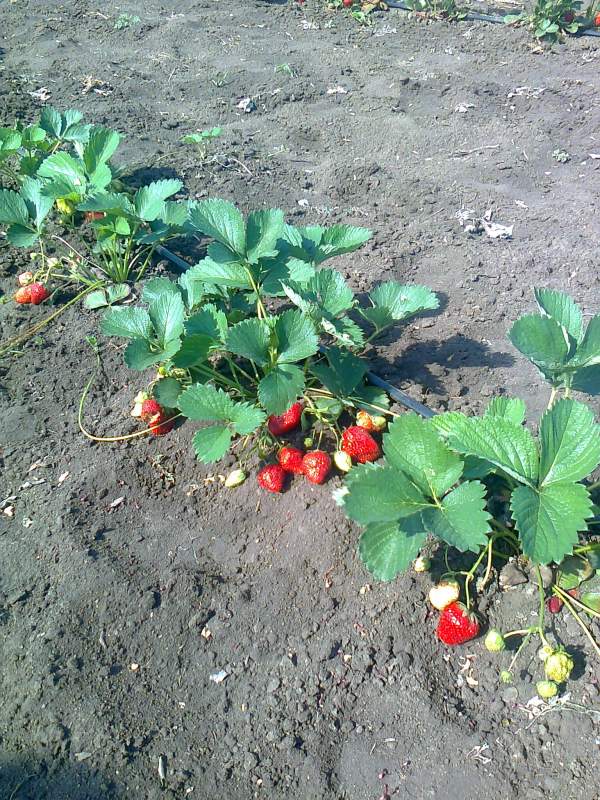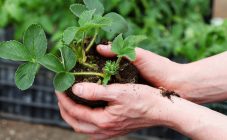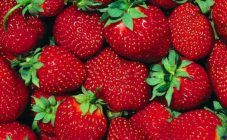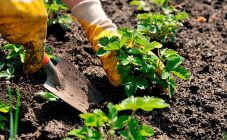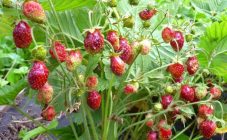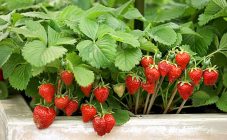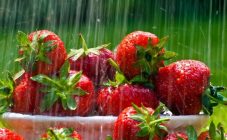Content:
Strawberry (or garden strawberry) is considered the most widespread crop in the whole world. To obtain large yields of juicy berries, suitable conditions are created. One of them is feeding strawberries during the fruiting period. The procedure is carried out taking into account all the rules of agricultural technology, but they take into account the peculiarities of caring for ordinary varieties and remontant ones.
Conditions for growing strawberries
Strawberries develop well only on cultivated soils saturated with useful elements. But even in fertile soil, before planting garden strawberries, it is recommended to introduce organic matter (humus, compost, manure) and potassium-phosphorus fertilizers.
Strawberry care includes regular watering, loosening and weeding. The conditions of agricultural technology imply 3 main approaches for applying fertilizers to the beds with the crop:
- after spring pruning of old leaves;
- during budding;
- after harvesting the main harvest.
These dressings are the key to the correct development of the bushes, which means a good harvest. Additional feeding of strawberries during fruiting is also important. But novice gardeners often ignore this moment, worrying that fertilizers will have a negative impact on the taste, because the berry will absorb the composition introduced into the soil.
The purpose of using fertilizers during the fruiting period
| Berry growth phase | Ripening phase |
|---|---|
| · Nutrients contribute to the growth of fetal cells, the formation of berries; | · The reproductive organs are activated. It promotes weight gain and berry growth; |
| In parallel, there is the prevention of fungal diseases | The sugar content increases, the transportability of fruits improves, the amount of nitrates absorbed by strawberries decreases when using dressings in the spring |
Additional feeding of the bushes is especially necessary if the set berries take on an irregular shape during growth, lose their standard color, gain weight poorly, or they show signs of disease.
When strawberries bear fruit
Garden strawberry is a perennial crop that yields succulent fruits earlier than other berry plants. Traditional varieties bear fruit in the second year after planting the bushes, but there are varieties that give berries in the first season.
In one place, strawberries abundantly produce 3-4 years. Then the yield falls, and it becomes necessary to find a new fertile site.
Depending on the variety, garden strawberries bloom from May to June; in early summer, you can pick berries. One bush actively bears fruit for 2-3 weeks, then the yield declines and ends by July.
The situation is somewhat different with remontant varieties. They give 2 stable yields per year: in early summer and in August. In some species, the second fruiting lasts until the end of September. Berries flicker on the bushes (but not significantly) and between the main harvests.
Care during fruiting
Knowing how to properly care for strawberries can improve the fruiting process and accelerate the ripening of berries. Fertilizers are applied in stages, taking into account the fruiting phase.
Care during the formation of berries:
- when the fruits are set, boric solution will help to accelerate their development; the product is taken at the tip of a knife and diluted in 10 liters of water;
- if you treat the bushes with zinc sulfate (2 g per bucket of water), not only during flowering, but also during the growth of ovaries, this will help increase productivity;
- at the beginning of the formation of berries, the plant needs potassium monophosphate - 1 tbsp. l. on a bucket of water; this amount is distributed over 5 fruiting bushes, which must first be watered abundantly;
- wood ash has a good effect on the development of fruits; powder is scattered in the aisles, by handfuls near each bush; either make a solution by first pouring a glass of ash with a liter of boiling water, then adding this mixture to a bucket of water; the solution is applied under the bushes during watering;
- saltpeter in combination with potassium sulfate is also good (they are taken in equal proportions); if you add one of the preparations ("Universal", "Kemira Lux") to the composition, the berries will ripen faster.
Care during active fruiting:
- Mullein is considered a versatile organic fertilizer that can be used at all stages of plant development; before feeding strawberries, organic matter is insisted for 2-3 days, diluted with water 1:15; for better fermentation, it is recommended to close the container hermetically; use at least 1 liter of the mixture for each bush;
- They do the same with chicken droppings, but the proportional ratio here is somewhat different - 1 to 30;
- You can also water the bushes with diluted compost - 1 kg of rotted raw materials are taken in a bucket of water;
- June is the time of active growth of nettles, which can also be fertilized with strawberries; the plant is collected, crushed and placed in a bucket, filled to the brim with warm water; insist and on the 4th day bring 1.5 liters of solution under each bush.
Separately, we should touch upon the topic of strawberry yeast feeding. It is such a nutritious blend that it produces amazing results in berry growing. You can use yeast at any stage of the growing season, but even if you start such feeding during the period of fruit formation, they will begin to ripen 6 days earlier than usual.
During the period of active fruiting, this yeast fertilizer will provide a large harvest and make the berry saturated with vitamins.
Yeast dressing
| 0.5 |
|---|
| Live yeast 0.5 kg; |
| Warm water 3 l |
| raw materials are poured and insisted for 4 hours, then diluted in 25 liters of water |
| Dry yeast 5 g; |
| · Water 0.5 l; |
| Sugar 1 tbsp |
| prepare the mixture and after 3 hours dilute with water (25 l) 1 |
| · Dry raw materials 1 tbsp; |
| Ascorbic acid 2 g; |
| · Warm water 5 l; |
| Garden land - a handful |
| all ingredients are mixed and infused for 24 hours, then the mixture is poured into a bucket of water |
Each folk recipe given in the table will allow garden strawberries to bear fruit more abundantly. The composition of the dressings is harmless to the culture and does not spoil the taste of the fruit, but it saturates the soil with beneficial bacteria.
Foliar treatment of berry bushes in the fruiting phase is not recommended. This will lead to the death of the entire plantation.
rules
It is important not only to know what to feed strawberries with during the fruiting period, you need to do it right:
- if nutrient solutions are used, then fertilizing is combined with irrigation or work is carried out after rain;
- dry fertilizers are spread around the bushes before watering;
- it is unacceptable to process strawberries in the daytime - under the influence of sunlight, the nutrient composition will begin to evaporate and damage the leaves of the plant;
- the best time for fertilization is evening, at sunset;
- the quality of fertilizing does not depend on the increase, but on the observance of the norms of the ingredients introduced into the soil;
- if mineral fertilizers are used, they are introduced into the composition of dressings a week before the fruit begins to turn red.
It is worth limiting the amount of dressings - during the ripening of the fruits, one nutritious entry is enough to achieve the desired result. An excess of fertilizers will lead to "fattening" of the bush to the detriment of the quality of the berries. Excessive organic matter can add bitterness to the taste.
The above recipes for useful dressings are universal for soils. But not all soils have a standard composition. Therefore, it is recommended to conduct an analysis to determine what the strawberries need more, and then select the appropriate nutritional components.
You don't even need to add the recommended fertilizers to the soil during strawberry ripening, limiting yourself to mulching the beds with humus or peat. If additional nutrition is necessary, it is applied on top of the mulch, but in this case, less concentrated compositions are used.
Fertilizing remontant strawberries after fruiting
Summer residents are increasingly planting crops with double (triple) fruit rotation in their plots. So that the berry growers have enough strength for the second run, you need to know how to feed the remontant strawberries after the first fruiting.
Summer for remontants is full of an active phase of development. In June, the plants bear their first fruits, in July they regain their strength in order to please again with abundant harvests from August. Strawberries take a lot of energy, so it is imperative to fertilize them between fruiting phases. Then there is a chance that in the second run, the favorite variety will produce more berries, and they will be larger.
It is necessary to fertilize remontant varieties with a complex of mineral and organic components. When choosing a mineral water, they rely on potassium and phosphorus, excluding completely nitrogen components, since this element is already present in organic matter
The following formulations, applied to the strawberry plot in July, help to quickly ripen a new crop:
- mullein bucket + ½ cup wood ash;
- 30 g of potash fertilizers + ash 1 cup + 2 tbsp. nitrophoski;
- 30 g of urea per 10 liters of water.
If the first 2 compositions are applied under the bushes in a dry form, then the last option is replaced by one of the waterings.
Additional processing of the bushes with iodine solution (1/2 tsp per bucket of water) is not only a good feeding of the berry culture, but also a way to avoid the development of rot.
You can also use the recipes above. Nettle, manure, poultry droppings and yeast recuperate well after fruiting and set the remontant varieties for a new ripening.
Foliar processing
This variety of strawberries actively responds not only to fertilizers applied to the soil, but also to the foliar method of processing bushes. As a result, the yield increases, and the berries are protected from diseases.
Most often, a solution of zinc sulfate (0.02%) is used for spraying. Even if in July bloom is observed on some remontants, this tool turns out to be harmless to strawberries and will only spur the culture to increase the ovaries.
Complex composition:
- boric acid (1 g);
- manganese and potassium sulfate (2 g each);
- some mineral water (special for strawberries).
With this composition, it is necessary to treat the underside of the leaves, with which the plant more intensively absorbs the liquid sprayed from the spray bottle. Irrigated strawberries are best fed in the evening.Then the composition will not evaporate from the bushes and will be absorbed by the plants as much as possible.
When the second wave of flowering begins, experienced farmers spray the strawberries with honey solution to attract the bees. It is enough to process each bush with a liter of sweet water with the addition of 1 tsp. honey. Despite the self-pollination of the crop, this trick will help increase yields.
Answers to common questions
Newbies in gardening always have a lot of questions about growing berry crops. Here is the answer to the most common one.
Can strawberries be weeded while fruiting? If the strawberry bed is overgrown with weeds, the berries do not receive enough sunlight and nutrition, they ripen poorly. But active weeding with a hoe can damage the roots of the plant (they are very close to the surface).
We recommend cleaning by hand using regular scissors. Cut the weeds as close to the ground as possible. If the grass is small, you can gently pull it out, being careful not to expose the strawberry roots.
As soon as the main harvest has passed, a full weeding can be carried out. If the beds are covered with mulch in advance, it will eliminate this procedure and allow the berries to always remain clean.
You should pay attention to the mustache during fruiting. They form throughout the season and affect the number of ovaries. The more rosettes a common variety forms, the fewer berries the mother bush will give. Therefore, each extra mustache must be cut off.
The opposite is true for renovators. A large number of whiskers and rosettes forming on them only stimulates the main plant to increase the quality of fruits and a bountiful harvest. If weeding is carried out in the summer, they try not to break the connection with the daughter layers. It is good to stimulate the development of rosettes of remontant varieties with foliar feeding, in which yeast is present.

